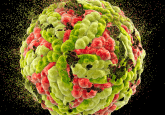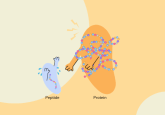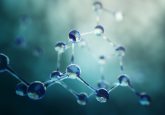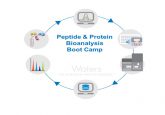Routine lipidomics, are we there yet?

Dr Albert Koulman achieved his PhD at the University of Groningen (Groningen, Netherlands) and has worked in both academia and a for-profit research organization AgResearch Ltd. (Hamilton, New Zealand). At AgResearch Ltd, he worked with industrial partners in the development of business critical intellectual property. He possesses a track record in the development, validation and application of analytical methods for large-scale and very large-scale studies; Albert was responsible for the largest successful lipid profiling study in over 28,000 individuals. This work provided strong, well-defined evidence that different plasma saturated fatty acids have varying associations with the risk of diabetes, a finding which is fundamental in the development of public health policies and global health messages. Currently, Albert is the head of the NIHR BRC funded core Metabolomic and Lipidomics Laboratory and the Nutritional Biomarker Laboratory, both in Cambridge. He is also a principal investigator in the Metabolic Research Laboratory in Cambridge.
Lipidomics is a technology and should not be confused with lipid biochemistry, which is a long established field of science. Scientists and researchers that use lipidomics in their work depend on the insights and knowledge that lipid biochemistry has yielded over the past century. Many groups have applied lipidomics technology for the discovery of biomarkers of certain pathologies, clinical interventions or nutrition. We reviewed this almost 10 years ago [1] and this application has seen further exponential growth. These biomarkers are still rarely followed up with sufficient validation but provide a continuous interest in lipid biomarkers. In some cases, lipidomics approaches lead to the discovery of new lipid biochemistry, for instance, through the discovery of new lipid classes [2], but this remains extremely rare. Most scientists nowadays would like to see lipidomics as a routine technology that can be readily used in studies where an impact on lipid metabolism is expected. This begs the question if lipidomics can be seen as routine technology?
To be able to answer this question, it is important to understand what the difference is between lipidomics and the analysis of a specific lipid. It is often possible to develop a dedicated method to measure the exact concentration of a specific lipid. It is also possible to provide a full validation of that method for that particular lipid. Although the technology has made great strides over the past decades, the validation protocols have remained very similar. This should, however, not be confused with lipidomics, where the aim is to provide a comprehensive analysis of all of the lipids in the sample of interest. A comprehensive approach will always demand compromising on the analytical quality of the method. It is technically feasible to combine a number of analytes (lipids) into one method without the need to compromise on any part of the analytical quality. It becomes different when lipids from multiple classes are combined or lipids with a wide range of concentrations. Compromises have to be made. It is important to realize that any biological system lipid concentration will easily span over 10 orders of magnitude (see www.hmdb.ca), which is far greater than the dynamic range of any analytical technology. This problem is exacerbated by the fact the lipids can contain fatty acids that are isobaric and only differ by the location or orientation of the double bond. In most cases there will be a very large difference in concentration between these lipids. Therefore, all lipidomics technologies are based on compromises and have limitations. It is, for instance, at the moment impossible to measure PC(16:0/18:2(9E,12E)), PC(16:0/18:2(9Z,12E)), PC(18:2(9E,12Z)/16:0), TG(18:0/18:2(9Z,12Z)/18:2(9Z,12Z)), TG(18:2(9Z,12Z)/18:0/18:2(9Z,12Z), and TG(18:0/18:2(9C,12Z)/18:2(9Z,12C)) all in one method, with the same level of precision and accuracy for each lipid. From this we need to conclude that a routine lipidomics method that genuinely measures all different lipids in a biological sample still is and will remain impossible.
When we accept that a lipidomics method is a compromise and that not all lipids can be covered by one single method, it becomes possible to work towards a routine method with a known level of limitation. Which scientific question makes it relevant to know the difference in concentrations of both PC(16:0/18:2(9Z,12E)), PC(18:2(9E,12Z)/16:0) and TG(18:0/18:2(9C,12Z)/18:2(9Z,12C))? When the interest is to measure the different conjugated linoleic acid isomers gas chromatography (GC) is probably most suitable. GC analysis will not provide information about what the other fatty acids that are on the same lipid or if the fatty acid is in the sn1 or sn2 position, because fatty acid analysis by GC will demand a hydrolysis step. Measuring total PC(34:2) versus TG(54:4) can easily be done by direct infusion mass spectrometry.
With the caveat that true comprehensive lipidomics is technically impossible but specific methods can yield relevant information, it is worth considering what other aspects are relevant for a routine lipidomics method. Fatty acid analysis by GC can be automated [3] and applied to very large-scale studies [4]. The derivatization step to obtain methyl esters of the fatty acids complicates the automation of the method, but online derivatization can help with this. Current developments in two dimensional GC will give the opportunity to move to much higher levels of resolution and obtain information on different branched chain fatty acids and trans fatty acids, which are relevant when studying the effect of dietary fat on disease risk.
For routine lipid analysis, it is possible to use either direct infusion (or flow injection) mass spectrometry. In our lab we have used commercial kits (Biocrates) [5], which can be applied in an automated set-up and deliver relative abundancies of ca. 105 lipids and 40 acyl carnitines. We have applied this to large-scale studies as well [6] but have found this method relatively slow (80 samples per day) and costly. We have developed an in-house approach using chip-based infusion, that takes ca. 2 minutes per sample [7], which can be used on plasma as well as dried blood spots. Currently, we can operate this system on a 384-well format to screen through large number of samples within a day.
The actual measurements are one part of lipidomics, data processing and integration are the second part and are crucially important as well. The data processing, which involves peak-picking, alignment, identification, quality control, batch correction and normalization will yield the data that can be used for the actual analysis of meaningful results. Further integration of data, for instance in metabolic networks, requires that the results can be linked to database identifiers. This requires curation of the data and is very dependent on type of method and type of sample. Platforms like Galaxy (www.usegalaxy.org) are being used by different metabolomics and lipidomics groups to provide open methods for data processing and integration that stand up to scrutiny.
Although comprehensive lipidomics methods are not yet achievable, it has become possible to provide routine lipidomics methods where data can be quickly collected, processed and integrated. It will, however, remain crucially important that users are aware of the limitations of the method and the resulting data.
No financial disclosures or conflicts of interest.
References:
[1] Koulman A, Lane GA, Harrison SJ, Volmer DA. From differentiating metabolites to biomarkers. Anal. Bioanal. Chem. 394(3),663―670 (2009).
[2] Yore MM, Syed I, Moraes-Vieira PM et al. Discovery of a class of endogenous mammalian lipids with anti-diabetic and anti-inflammatory effects. Cell 159(2), 318―332 (2014).
[3] Wang LY, Summerhill K, Rodriguez-Canas C et al. Development and validation of a robust automated analysis of plasma phospholipid fatty acids for metabolic phenotyping of large epidemiological studies. Genome Med. 5(4), 39 (2013).
[4] Forouhi NG, Koulman A, Sharp SJ et al. Differences in the prospective association between individual plasma phospholipid saturated fatty acids and incident type 2 diabetes: the EPIC-InterAct case-cohort study. Lancet Diabetes Endocrinol. 2(10), 810―818 (2014).
[5] Siskos AP, Jain P, Römisch-Margl W et al. Interlaboratory reproducibility of a targeted metabolomics platform for analysis of human serum and plasma. Anal Chem. 89(1), 656―665 (2017).
[6] Lotta LA, Scott RA, Sharp SJ et al. Genetic predisposition to an impaired metabolism of the branched-chain amino acids and risk of Type 2 diabetes: a mendelian randomisation analysis. PLoS Med. 13(11), e1002179 (2016).
[7] Koulman A, Prentice P, Wong MCY et al. The development and validation of a fast and robust dried blood spotbased lipid profiling method to study infant metabolism. Metabolomics 10(5), 1018―1025 (2014).
Our expert opinion collection provides you with in-depth articles written by authors from across the field of bioanalysis. Our expert opinions are perfect for those wanting a comprehensive, written review of a topic or looking for perspective pieces from our regular contributors.
See an article that catches your eye? Read any of our Expert Opinions for free.






